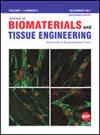A Protocol for Large-Scale Isolation of Rat Primary Osteoblasts Suitable for Exosome Extraction
IF 0.1
4区 医学
引用次数: 0
Abstract
Objective: This study aims to introduce an optimized method for the large-scale isolation of rat primary osteoblasts, suitable for exosome extraction. Methods: An advancement on the traditional secondary enzyme digestion method, manual bone grinding to clean connective tissue and ophthalmic cutting into fragments have been replaced with oscillating vortex rinsing and a 14 cm straight head shear in a centrifuge tube to cut bone fragments, significantly reducing the experimental time. The experiment was conducted on forty suckling rats. The experimental time of both the optimized and traditional methods were compared. The osteoblasts obtained through the optimized method were observed morphologically, identified by Alkaline phosphatase and alizarin red staining, and their proliferation activity was detected using the EdU method. Sufficient cell supernatant was collected to extract osteoblast-derived exosomes, identified by employing transmission electron microscopy, nanoparticle tracking analysis, and Western blot. Result: The total experimental time of the improved method (5.5±0.17 hours) was significantly shorter than the traditional method (7.25±0.23 hours) with a notable statistical difference (P <0.001); the osteoblasts obtained by the improved method displayed good growth status. On the seventh day, the cells matured and exhibited positive ALP staining. By the 21st day, mineralized nodules were formed, and alizarin red staining was positive. The EdU results showed that osteoblasts demonstrated healthy growth at both 24 and 48 hours, with a proliferation rate of (96.2%±1.3%) at 48 hours, slightly higher than that of (94.6%±2.8%) at 24 hours, with no significant statistical difference (P >0.05); Western blot showed positive results for CD9, CD63, and TSG101, and negative results for Calnexin. Conclusion: The optimized primary osteoblast isolation method can significantly improve experimental efficiency and is suitable for extracting osteoblast-derived exosomes.适合外泌体提取的大鼠原代成骨细胞的大规模分离方案
目的:本研究旨在介绍一种适合于外泌体提取的大鼠原代成骨细胞大规模分离的优化方法。方法:在传统的二次酶消化法的基础上,用振荡涡流冲洗和14cm直头剪切机在离心管中切割骨碎片,取代了手工磨骨清洁结缔组织和眼科切割碎片的方法,显著缩短了实验时间。该实验在40只乳鼠身上进行。比较了优化方法和传统方法的实验时间。通过优化方法获得的成骨细胞进行形态学观察,用碱性磷酸酶和茜素红染色鉴定,并用EdU法检测其增殖活性。收集足够的细胞上清液以提取成骨细胞衍生的外泌体,通过使用透射电子显微镜、纳米粒子跟踪分析和蛋白质印迹进行鉴定。结果:改进方法的总实验时间(5.5±0.17小时)明显短于传统方法(7.25±0.23小时),差异有统计学意义(P<0.05);蛋白质印迹显示CD9、CD63和TSG101的阳性结果,而Calnexin的阴性结果。结论:优化的原代成骨细胞分离方法能显著提高实验效率,适合于提取成骨细胞来源的外泌体。
本文章由计算机程序翻译,如有差异,请以英文原文为准。
求助全文
约1分钟内获得全文
求助全文
来源期刊

Journal of Biomaterials and Tissue Engineering
CELL & TISSUE ENGINEERING-
自引率
0.00%
发文量
332
审稿时长
>12 weeks
 求助内容:
求助内容: 应助结果提醒方式:
应助结果提醒方式:


